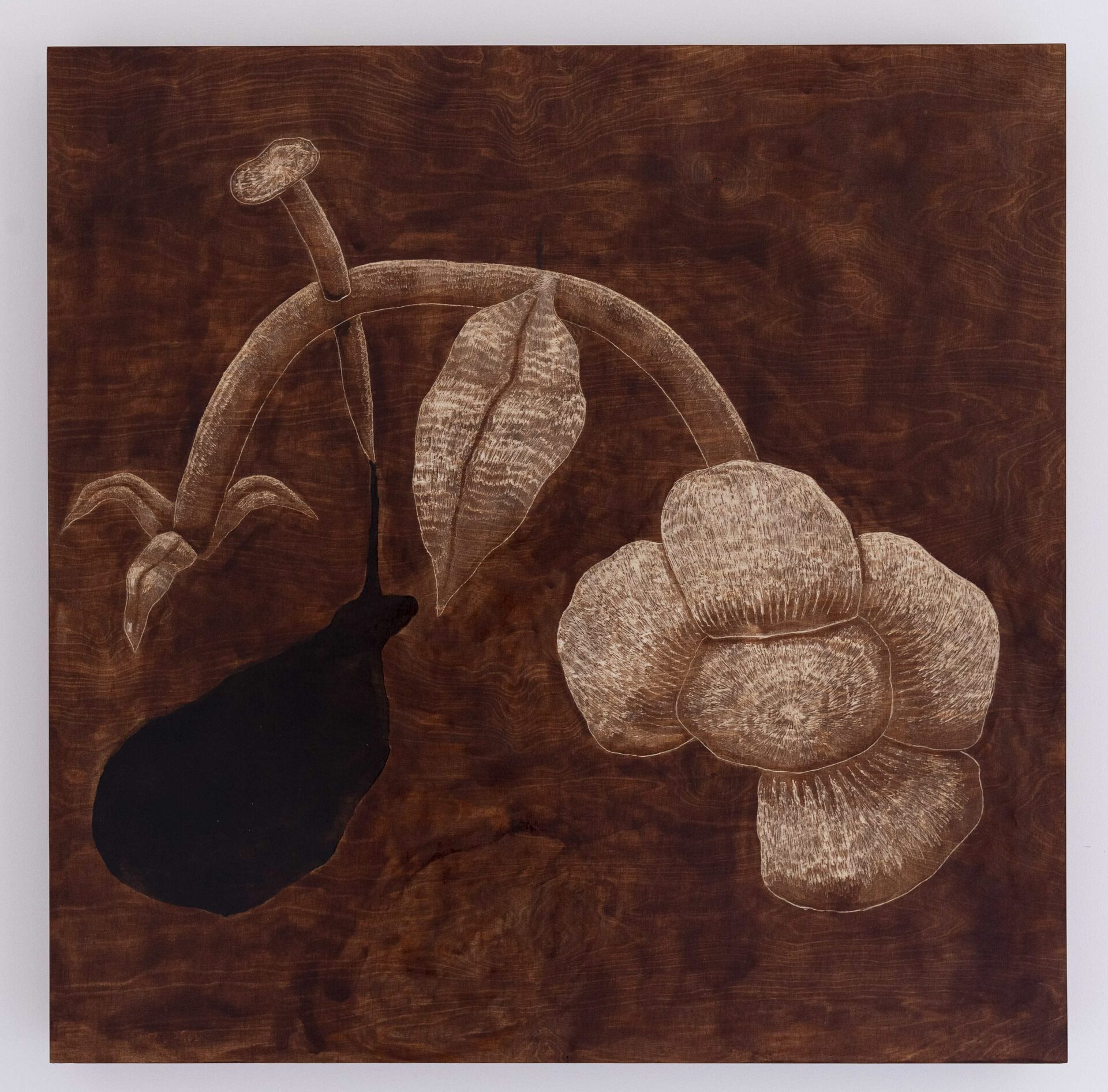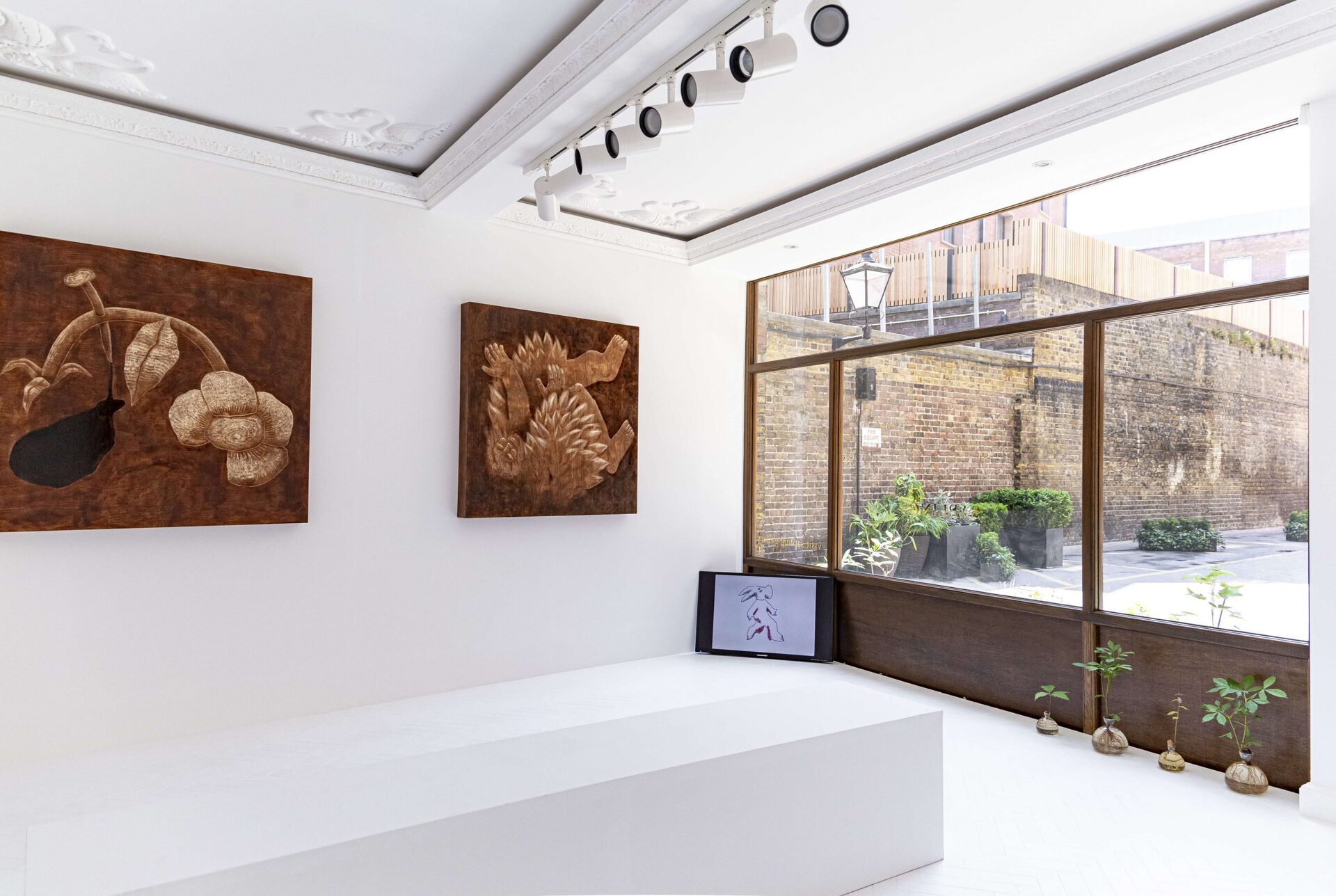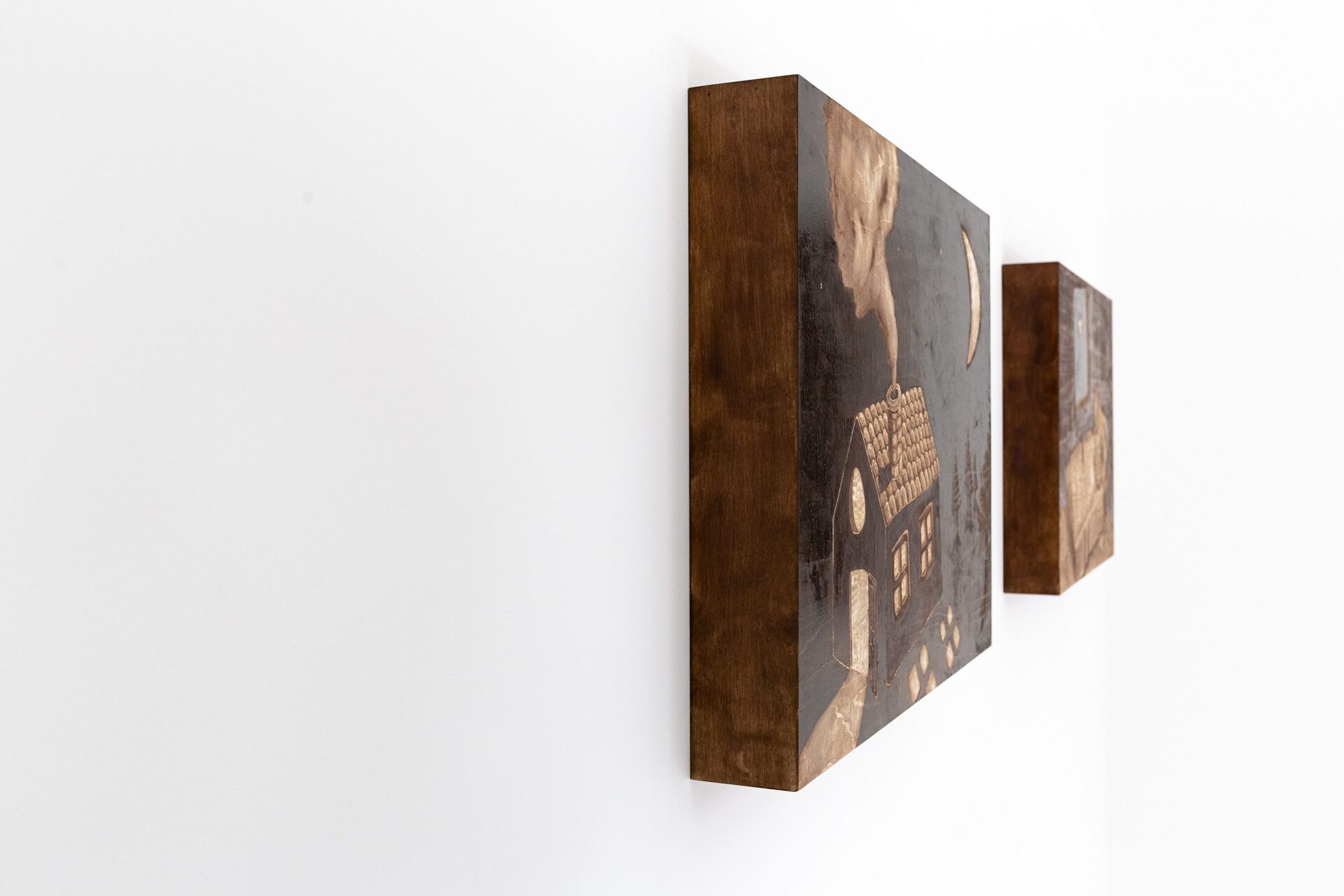Archive
2021
KubaParis
Thoughts to fall asleep to






Location
SaplingDate
04.06 –22.06.2021Curator
Charlotte Call, Caspar WilliamsPhotography
Alice LubbockSubheadline
Suppose you like flowers growing through pavement cracks, lazy doodles on foggy windows, and the taste of sea salt. In that case, Orfeo Tagiuri’s ‘Thoughts to fall asleep to’ at Sapling in London is for you ! At Sapling, the artist and writer, Orfeo Tagiuri, expands on his recent woodcarving practice exploring school desk scribbles as a form of storytelling. He has created five wood pictures alongside an animation playback and storyboard-like drawings for his debut show at the gallery.Text
Sapling is a budding art gallery just off of leafy Berkeley Square in London. Saplings, the gallery’s eponymous namesakes, are, of course, young trees, not yet poles or of useful timber size, growing from seeds or suckers. So, it is only fitting that London’s newest gallery addition reflecting art and nature opens with a show on woodcarving.
‘Thoughts to fall asleep to’ shows the newest iterations of Orfeo Tagiuri’s delicate and almost painterly woodcarvings, which he first developed as a Bloomberg New Contemporaries fellow in 2019. The American-born and London-based artist and writer has swapped pen and paper or lunch receipts, as it were, for a drummel and thin beechwood plates to explore school desk scribbles as a form of storytelling.
He recently showed the first iteration, a classroom-like installation, complete with school banks and pupil drawings on the walls, titled The Distance A Seed Travels From Its Mother Plant at the South London Gallery. Fittingly, ‘Thoughts to fall asleep to’ at Sapling opened on the closing weekend of the South London Gallery presentation, relaying a certain duality and coming-of-age of sorts, all the while toying with June as the month of Gemini and the two-headed Janus-deity.
Indeed, Tagiuri’s display at Sapling feels like a rite of passage. Gone is the classroom aura, swapped for a more elegant but still minimal setting with a stucco ceiling and column-framed niches. The school desks with subtle scribbles have matured into massive wood pictures on the walls, while Tagiuri’s storyboard-like doodles no longer remind children’s drawings in classrooms. Instead, they have been pinned like post-its to a column-framed niche on the wall. The telly on the floor and the view outside with potted plants and an inviting bench suggest a homier feeling.
At first glance, the five wood pictures appear firmer than they actually are and more like massive woodblocks. However, this is an illusion as the artist used several thin beechwood plates on which he incised delicate lines using a drummel and sandpaper. He built tone by layering varnish before subtly nailing the fines plates together and creating the finished wood picture. Their elusive aura quietly but authoritatively defies photography and highlights the woodcarving’s painterly qualities instead. (You need to zoom in to see for yourself…)
A so-called hammerhead is the main character in ‘Thoughts to fall asleep to’. The exhibition centres around his adventures, dreams and fears until the dusk of dawn and reflects existential topics such as life cycles, growth and decay or the relationship between falling and failing as the narrative unfolds.
A Beginning shows the hammerhead’s house, his shelter or castle, setting the scene. It is where the hammerhead has delicious meals like in Hammer Eating Nails or wishes upon a star at night in Hammer and Star (Not So Far Away). The following two pictures could be of the hammerhead’s dreamscapes, coalescing his hopes and fears: the falling daisy leaves in Dying Flower suggest a game of Love me, love me not, while Angel Falling Through The Night hints at a new friend entering his life.
Life’s Cycle, the hypnotic animation, is only a few seconds long and being played on a loop in the gallery. It has been made of 144 original doodles on copy paper, some of which are currently on display. Life’s Cycle appears to corroborate the narrative and existential topics in the wood pictures.
Though the hammerhead’s origins are to be found in a little booklet, compiled on the eve of the opening and filled with Tagiuri’s thoughts from the previous morning. He relays the appearance of the hammerhead to two previous illustrations he did in the past: one was about setting sail, and the hammerhead was being used to build the boat. The other was about ‘The Stations of the Cross.’ ‘Thoughts to fall asleep to’ also includes a biblical reference, that of ‘The Fall From Grace’, in Angel Falling Through The Night.
The booklet also offers an insight into the emotional and evocative depth of Tagiuri’s imagination. His distinct iconography (flower, tree, home, angel, star, moon, hammer, dog & wolf, bird, cloud with rain/snow/tears, night time) is an amalgamation of his writings and drawings alike, which he himself likens to his own personal alphabet. Each of these motifs or so-called letters carries its own set of references, offering almost endless interpretation possibilities like the notes on a piano.
‘Thoughts to fall asleep to’ at Sapling emphasises Orfeo Tagiuri’s multi-disciplinary practice, coalescing his fascination and imagination into alphabetic symbols used both in his writing and art practices. The exhibition brings Tagiuri’s poetic and delicate woodcarvings to the foreground. It shines a particular light on the drawing-like expression in his draughtsmanship as well as the elusive and photography-defying aura of his wood incisions. It remains to be seen whether this is Tagiuri’s unconscious desire to withstand the demands of digital audiences; a return to a more documentary-friendly practice in times of a pandemic may be imminent.
Maximiliane Leuschner